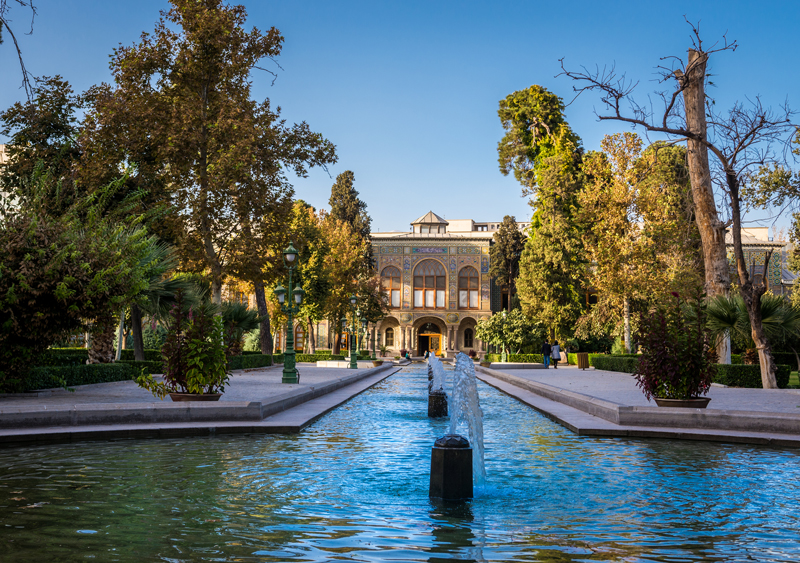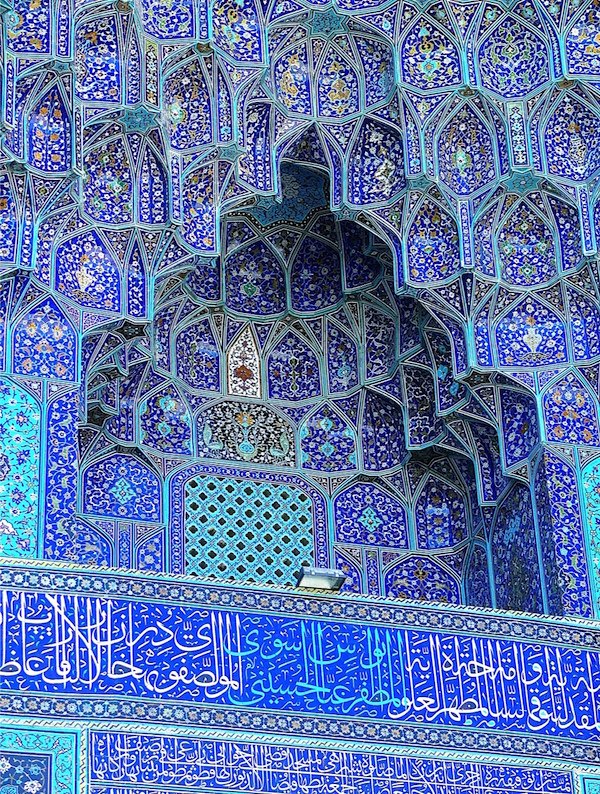Nowhere but Iran can you walk among the ruins of a garden created more than 2,500 years ago. Nowhere else on earth can you find an entire suite of nine UNESCO World Heritage Persian Gardens. And nowhere else has one guiding principle of garden design not only persisted for more than two millennia, but also inspired and influenced the creation of the Mughal and other great gardens of the world. Gardening Australia presenter, Jennie Churchill, explores the ancient silk road gardens.
I first visited Iran in 2013 as tour leader of a group from the Foundation & Friends of the Botanic Gardens. Wow. I was captivated (we all were) – by the warm, welcoming and cultured people, the landscapes and spectacular ruins, cities with their magnificent architecture, green spaces, ancient histories and rich colours (exquisite blue tiles and deep orange saffron) and, the Persian Garden. I’ve yearned to go back ever since.
Now I have the chance to share my love for this part of the world – and you can join me! I’m incredibly excited to be returning in September 2017 to lead Opulent Journey’s Iran and the Legendary Silk Road by Private Train tour. Just think – the romance of the Persian Garden is enticing enough, travel by private train has got to be the icing on the cake.
We visit five of Iran’s nine World Heritage gardens (the tour covers ten UNESCO World Heritage sites), traverse Iran from west to east, and spend time in its most significant and beautiful cities: Mashhad, Yazd, Isfahan, Shiraz and Tehran.
But this tour is about much more than gardens. Before we arrive in Iran, we will have explored the stunning architecture, ancient history and culture of two Central Asian countries, Uzbekistan and Turkmenistan.
Cities like Samarkand and Bukhara in Uzbekistan, once dominant crossroads on the Silk Road, are still today jam packed with extraordinary sights. And while there are no extant early gardens in these countries for us to visit, records show Amir Timur, ruler of the Timurid Empire in the 14th century, built at least seven large Persian-influenced gardens around his capital Samarkand, most coinciding with the acquisition of a new wife …

Ulug Bek Madrasah, Samarkand. Fifteenth century Timurid ruler Ulug Bek was also one of the most skilled astronomers of his era
But back to the Persian Garden.
We’ll walk the ruins of Cyrus the Great’s gardens at Pasargadae near Shiraz, regarded as the oldest extant garden in the world. Imagine if you can, the 6th century BC. The legendary ruler Cyrus II returns from conquering the Medes to establish Pasargadae as the dynastic capital of his vast Achaemenid Empire.
Here is a military and political genius who also loves gardens, art, architecture and design. Within its 160 hectare complex of palaces, citadels, pavilions and terraces, Pasargadae became Cyrus’ Paradise on Earth, his Eden and – according to UNESCO – a prototype for the Chahar Bagh, the Persian Garden principle of four quadrants formally divided by waterways or pathways.
Always in four parts, Persian gardens brought together man made structures with natural elements. Elegant pavilions provided cool places to sit and overlook long water rills framed by planting, while cross axes created the symmetrical quadripartite structure. Water was essential, both for ornamentation and irrigation, with fruit trees combined with flowers. Vaulted arches and inner courtyards linked indoors and outdoors, and high enclosing garden walls sheltered these lush green sanctuaries from the surrounding arid landscapes.
Where did this precious water come from? As early as 1,000 BC, Persians became skilled at harnessing and managing water, building elaborate systems of qanats, underground conduits that carried melting snow to people, fields and gardens. Trees were often planted in open ditches called jubs, with sluices allowing seepage to tree roots and periodic flooding of sunken garden beds.
So where else are we going on this tour? In Iran, we first journey west across the Iranian Plateau from Mashhad, Iran’s holiest city. We’ll learn about qanats at the Water Museum in the mud brick desert city Yazd, with its badgirs (wind towers) dominating the skyline and long history of Zoroastrianism.
Further west we reach Isfahan and what a treat this will be. It’s one of Iran’s jewels. We venture off the main tourist trail to Kashan, discovering the city’s remarkably rich architecture and visiting Bagh-e Fin, described by Penelope Hobhouse as ‘one of the most beautiful gardens in Persia’. On to Shiraz, city of poets, and from here we also spend a day exploring the ruins of Pasargadae and Persepolis.
Tehran’s galleries and museums are next, but we also venture out of the city towards the Alborz Mountains to spend time in the Khovir National Park and the national Iranian Botanic Gardens.

Golestan Palace Tehran: symmetrical gardens of cooling water and greenery grace many public buildings
Central Asia will be equally unforgettable! Yes, I know I have to stop using superlatives but how else to describe the experiences we have planned? Turkmenistan’s Merv, once glorious city destroyed by Ghengis Khan’s son in 1221, its remnants rising starkly from the desert. Samarkand’s enormous Registan Square, a side trip to the ancient rural market town of Urgut, and Bukhara, city of a thousand monuments.
I’d be so delighted to share this incredible adventure with GardenDrum readers. You can find more information about the tour at Opulent Journeys Iran and the Legendary Silk Road by Private Train. The itinerary includes Persian gardens but it has a broad focus with something for everyone – lovers of history, art, architecture and travellers interested in grabbing the opportunity to experience different cultures that perhaps may not survive into the future. As the tour is land content only, tour participants can travel to Tashkent from anywhere to join the group (Opulent Journeys will assist with competitive airfares).
And, if I’ve piqued your interest, I carted two fabulous reference books to Iran in 2013 and will do so again in 2017: the wonderful Gardens of Persia by Penelope Hobhouse (2003) and Bulbous Plants of Turkey and Iran by Peter Sheasby (2007).
About Jennie
A veterinarian and a gardener, Jennie Churchill has always been passionate about flora and fauna. In her gardening career she is best known as a presenter on ABC TV’s Gardening Australia, co-author and co-photographer of two books on Edna Walling and most recently, as Editor and co-author of The Royal Botanic Garden Sydney: The First 200 Years. Jennie lived in Kiloren, an Edna Walling-designed garden on the southern tablelands of NSW for more than three decades.
This article was originally published on Garden Drum and is republished here under Creative Commons.






































Add Comment